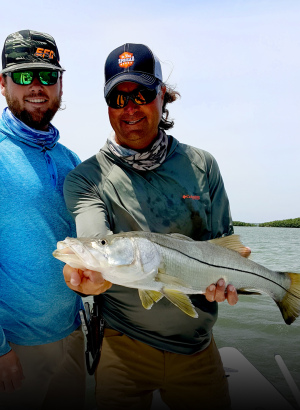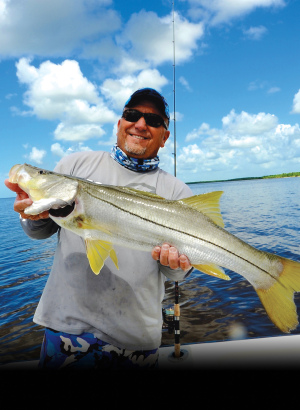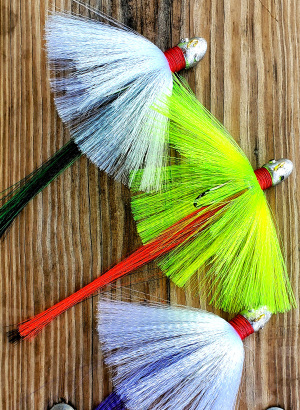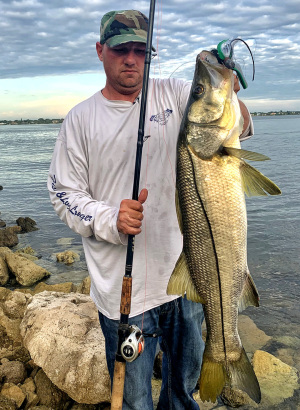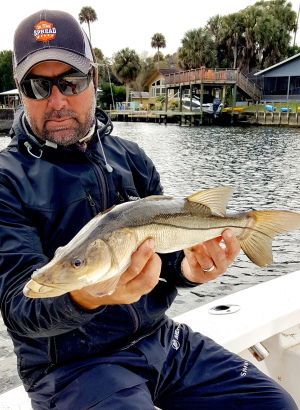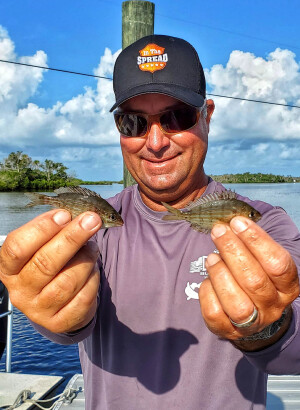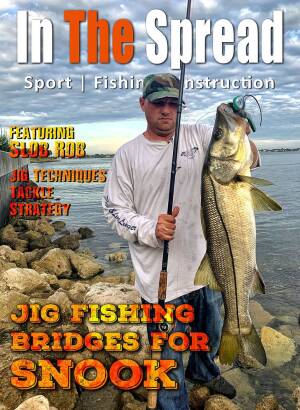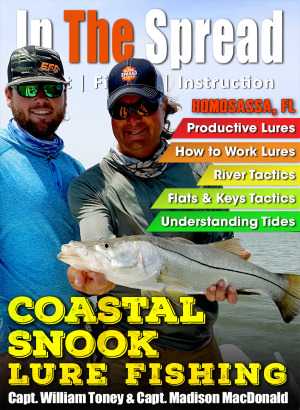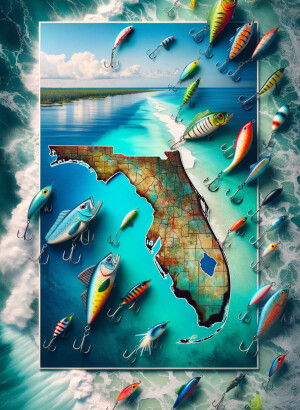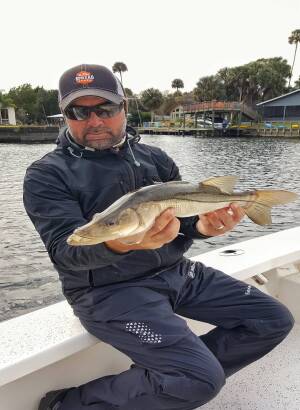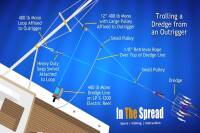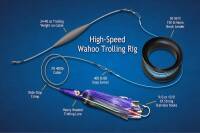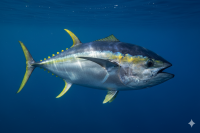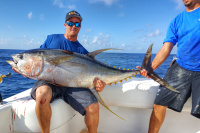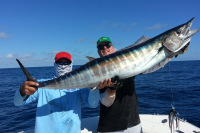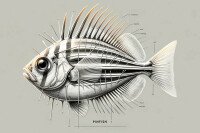Florida snook fishing offers thrilling action for anglers seeking explosive strikes and acrobatic fights. These powerful gamefish thrive in diverse habitats from ocean beaches to freshwater rivers throughout the Sunshine State. Learn essential techniques, seasonal patterns, and top locations to target these elusive predators and experience why snook remain Florida's premier inshore species.
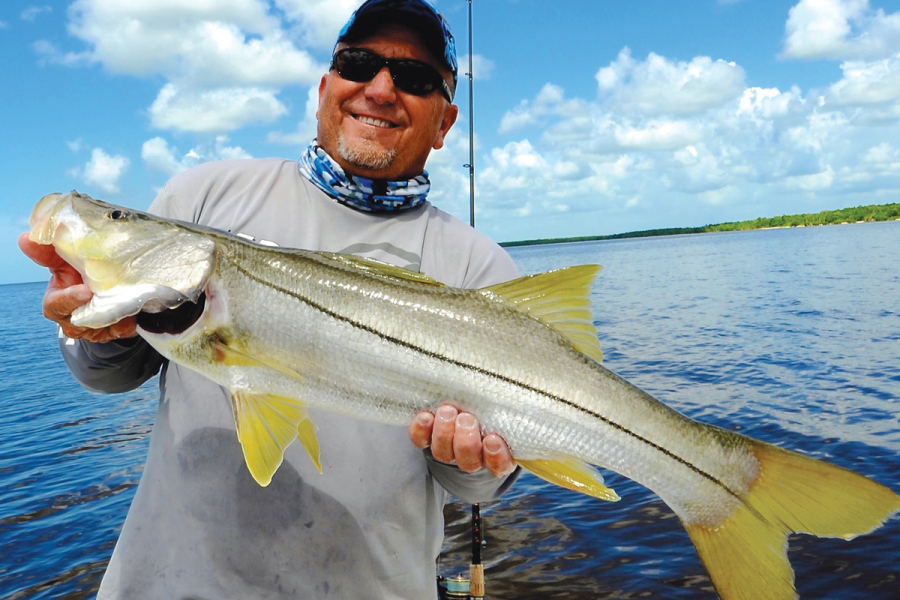
Snook Fishing in Florida
Why Florida Offers the Best Snook Fishing
Florida snook fishing delivers one of the most thrilling angling experiences in North America. These powerful, intelligent gamefish have earned their reputation as premier inshore targets due to their explosive strikes, acrobatic fights, and challenging nature. Throughout Florida's extensive coastline, anglers discover world-class opportunities to target snook in diverse environments—from ocean beaches to freshwater rivers—creating a uniquely versatile fishery that appeals to beginners and experts alike.
What truly distinguishes snook from other inshore species is their remarkable adaptability and unpredictable behavior. These distinctive silver-sided predators thrive across saltwater, brackish, and freshwater habitats, requiring anglers to master various techniques and understand complex seasonal patterns. The challenge of outsmarting these wary fish, combined with their heart-stopping strikes and powerful runs toward structure, creates an addictive pursuit that keeps anglers returning season after season.
Understanding Snook Biology and Behavior for Better Fishing Success
Common snook (Centropomus undecimalis) display a distinctive profile that makes them easily recognizable among Florida's gamefish. Their elongated, torpedo-shaped bodies feature prominent lateral lines and their most identifying characteristic—a bold black stripe running the length of their silvery sides. The protruding lower jaw and slightly concave head profile complete their unmistakable appearance. While the Florida state record stands at an impressive 44 pounds, 3 ounces, most anglers catch fish in the 18-28 inch range during typical outings.
Seasonal Snook Movements Every Angler Should Know
Seasonal movements play a crucial role in successful snook fishing. During warmer months (spring through fall), snook disperse throughout coastal systems and gravitate toward inlets, passes, and beaches for spawning activities. As temperatures drop in winter, these cold-sensitive fish retreat to deeper waters, rivers, canals, and other thermal refuges where they can survive until waters warm again. Understanding this temperature-driven behavior is essential, as snook become notably lethargic when water temperatures fall below 60°F and may stop feeding entirely in colder conditions.
One of the most fascinating aspects of snook behavior is their highly selective feeding pattern. Research reveals snook consistently prefer prey approximately 14% of their own body length—a phenomenon known as the "14% rule." This selective approach explains why snook might ignore abundant small baitfish in favor of less common but optimally sized prey. For anglers, matching bait or lure size to this preference can dramatically increase success rates, particularly as available prey sizes shift seasonally.
Top 10 Places to Catch Trophy Snook in Florida
Florida boasts numerous world-class snook fishing destinations, with certain locations consistently producing exceptional results. On the East Coast, Sebastian Inlet stands as perhaps the premier snook fishery globally, with its powerful tidal flows, deep channels, and abundant structure creating perfect ambush points for large snook, particularly during spawning migrations. Other top Atlantic destinations include Jupiter Inlet, Fort Pierce, and the extensive Indian River Lagoon system, each offering unique opportunities throughout the year.
When to Target Florida Snook: Best Seasons and Tides
Seasonal patterns heavily influence when and where to find snook throughout Florida. Spring (March-May) sees snook becoming increasingly active as waters warm, transitioning from winter refuges toward flats, mangroves, and eventually beaches. Summer (June-August) represents peak spawning season, with snook concentrating at inlets, passes, and beaches, particularly during full and new moons. Fall (September-October) offers exceptional opportunities as post-spawn fish feed aggressively to rebuild energy reserves. Winter (November-February) finds these cold-sensitive fish retreating to deeper waters, canals, rivers, and warm-water outflows where they seek thermal protection.
Tidal movement stands as perhaps the single most influential factor affecting daily snook feeding behavior. The outgoing tide, especially the first two hours after high tide, consistently produces the best action. During this period, receding water washes baitfish and crustaceans from mangroves and flats, creating feeding opportunities that snook readily exploit. The slightly murkier water during outgoing tides also makes snook less wary and more likely to strike artificial lures.
Lunar cycles further impact snook behavior, particularly during spawning season. New and full moons generate stronger tidal movements, concentrating fish and triggering more aggressive feeding. Many experienced anglers plan their outings around these lunar phases, focusing on the days surrounding full and new moons when snook activity typically peaks.
Best Snook Fishing Tackle: Rods, Reels, and Leaders for Every Situation
Selecting appropriate tackle for snook fishing requires considering both your fishing environment and the size of fish you're targeting. For most situations, a 7 to 7.5-foot medium or medium-heavy spinning rod provides the ideal balance of casting distance, accuracy, and fish-fighting capability. However, specific environments demand tailored approaches to maximize effectiveness.
Choosing the Perfect Snook Fishing Reel and Line
The ideal reel for snook fishing is a saltwater-rated spinning reel in the 3000-4000 size range. These mid-sized reels offer several essential features for consistent success:
- Sufficient line capacity (150-200 yards of 20-30 lb braided line)
- Smooth, reliable drag systems with 15-20 pounds of maximum pressure
- Corrosion-resistant components built to withstand harsh saltwater conditions
- Proper balance with medium to medium-heavy rods
When fishing near heavy structure or targeting trophy snook, consider stepping up to 4500-5500 series reels for additional line capacity and drag strength. Spinning reels generally outperform baitcasting reels for snook, particularly in windy conditions, as they allow for easier casting of light lures and reduce backlash problems.
Leaders and terminal tackle significantly impact hookup rates when pursuing these wary predators. Fluorocarbon leaders in the 20-40 pound test range provide necessary abrasion resistance while maintaining relatively low visibility underwater. For hooks, circle hooks have become the standard for several important reasons:
- They significantly reduce gut-hooking, improving survival rates for released fish
- They provide excellent hookup rates, especially with live bait
- They're increasingly recommended or required in various Florida fisheries
Match hook size to your bait—1/0-2/0 for small offerings like shrimp, 3/0-6/0 for medium baitfish, and 6/0-9/0 for larger baits like mullet or ladyfish.
Fly anglers typically choose 8-weight rods as standard equipment for snook, with 9-weight models preferred in windy conditions or when targeting larger specimens. Pair with quality saltwater reels holding weight-forward floating line and at least 150 yards of backing for sufficient fighting capacity.
Modern electronics enhance snook fishing success, particularly when targeting fish in deeper channels or identifying structure that concentrates fish. Fish finders help locate underwater features that attract snook, while GPS capabilities allow anglers to mark productive spots for future reference. These tools prove most valuable in boat fishing scenarios—shore-based anglers rely more on understanding tidal movements, reading water, and recognizing visual cues indicating snook presence.
Essential accessories for responsible snook fishing include rubberized landing nets to minimize damage to the fish's protective slime coat, fish grips designed for proper handling, long-nose pliers for hook removal, and dehooking tools for quickly releasing fish without excessive handling.
Most Effective Live Baits and Artificial Lures for Catching Florida Snook
Live bait consistently produces the most reliable results for targeting snook throughout Florida waters. Several key options stand out for their effectiveness across different conditions. Mullet (particularly finger mullet and juvenile mullet) represent perhaps the ultimate snook bait, especially during the fall mullet run when snook naturally key in on this abundant prey. Pilchards (scaled sardines) and threadfin herring ("whitebait") prove highly effective in both Gulf and Atlantic waters, particularly when fished live around structures, beaches, or grass flats. Pinfish offer exceptional durability, staying lively on the hook for extended periods, making them ideal choices around heavy structure where presentations may need to remain in place longer. Myan Cichlids, where available, are outstanding in brackish waters on the Atlantic side.
Top Artificial Lures That Trophy Snook Can't Resist
For artificial lure enthusiasts, several categories consistently produce snook strikes across various environments. Soft plastic paddle tails (4-6 inches) rigged on jig heads effectively mimic baitfish and work productively in diverse settings from beaches to backcountry mangroves. Bucktail and Flair Hawk jigs, especially when worked slowly around bridges and inlets, have earned legendary status among snook anglers for their ability to catch quality fish. Topwater plugs trigger explosive surface strikes during low-light periods (dawn, dusk, and night), creating some of the most exciting visual takes in all of fishing.
Lure color selection should reflect water clarity and light conditions for maximum effectiveness. In clear water scenarios, white, silver, and natural baitfish patterns typically produce best results. For stained or murky water, brighter colors like chartreuse, pink, or gold/black combinations increase visibility and drawing power. During low-light conditions (dawn, dusk, night), darker colors that create strong silhouettes often outperform brighter options by providing clearer targets against the surface.
Night fishing techniques deserve special attention since many trophy snook are caught after dark. Lighted docks, bridges, and piers attract baitfish, which subsequently draw feeding snook to these illuminated areas. Effective night lures include dark-colored swimbaits, noisy topwater plugs, and slow-retrieved jigs that create vibration and water displacement. Live baits fished around these lighted structures often produce exceptional results, particularly during summer months when snook may feed more actively at night to avoid daytime heat.
Proven Snook Fishing Techniques and Strategies for Beginners and Experts
Snook fishing techniques broadly divide into two fundamental approaches: sight fishing and blind casting. Sight fishing involves visually locating snook—whether cruising beaches, holding under mangroves, or staging near structure—and making precise presentations directly to the fish. This method proves most effective in clear water conditions during daylight hours, particularly on beaches and shallow flats. Successful sight fishing requires stealth, accurate casting, and the ability to identify subtle indicators like nervous water, wakes, or shadows revealing snook presence.
Blind casting, conversely, involves targeting likely holding areas without actually seeing the fish. This approach dominates when fishing deeper water, stained conditions, or during low light periods when visibility is limited. When blind casting, focus your efforts on high-percentage areas including:
- Structure providing ambush points (mangroves, docks, bridges, jetties)
- Zones with moving water and strong tidal flow
- Channel edges, drop-offs, and depth changes
- Known snook migration routes and staging areas
Structure Fishing Tactics for Landing More Snook
Structure fishing represents a cornerstone of consistent snook success. These predators strongly associate with various forms of cover, using them as ambush points and protection. Docks and bridges provide shade, current breaks, and concentrations of baitfish, making them prime snook habitat. When fishing these structures, cast parallel to pilings, target shadow lines, and prepare for powerful initial runs toward cover when hookups occur.
Mangrove shorelines require precise presentations tight to overhanging branches where snook wait to ambush passing prey. Accurate skip-casting techniques often become necessary to reach fish holding deep within mangrove root systems. Beach fishing presents different challenges, requiring anglers to identify troughs, points, and other structural elements that concentrate baitfish and attract feeding snook.
Presentation techniques vary significantly based on bait type and fishing scenario. Live bait generally produces best when free-lined or minimally weighted to achieve natural movement. Artificial lures like soft plastics typically require more active manipulation—twitches, pops, or steady retrieves that trigger reaction strikes. Topwater lures demand varying cadences from aggressive "walking the dog" to subtle surface disturbances based on conditions and fish activity levels. Jigs excel when bounced along bottom structure or worked through the water column with erratic, prey-imitating retrieves.
Water clarity dramatically influences effective strategies. In clear water, snook become increasingly wary, requiring longer casts, lighter leaders, and more natural presentations to avoid spooking fish. In murky or stained conditions, focus on lures with strong vibration or flash, use brighter colors, and consider adding scent to artificial offerings. During outgoing tides when water typically carries more sediment, snook become less selective, often striking more aggressively at artificial presentations.
Tidal movement creates feeding windows that successful anglers consistently exploit. The first two hours of outgoing tide generally provide the most productive fishing, as baitfish and crustaceans get swept from shallow areas past waiting snook. During incoming tides, concentrate on points, creek mouths, and other features where snook position themselves to ambush prey being pushed inshore by rising water.

Florida Snook Fishing Regulations and Conservation Efforts in 2025
Florida's snook regulations reflect a science-based approach to ensuring sustainable populations while allowing reasonable recreational harvest. These carefully crafted rules vary by region, acknowledging different population dynamics, environmental conditions, and fishing pressure across the state. As of 2025, Florida divides into nine distinct snook management regions, each with tailored regulations governing seasonal closures, size requirements, and harvest limits.
On Florida's Atlantic Coast, typical open seasons run from February 1 to May 31 and September 1 to December 14, with a 28-32 inch slot limit protecting both younger breeding fish and larger, more fecund females. Gulf Coast regulations generally permit harvest from March 1 to April 30 and September 1 to November 30, with a slightly larger 28-33 inch slot limit. Throughout the state, anglers face a one-fish-per-person daily limit, with vessel limits ranging from 2-4 fish depending on the specific region.
Always check the FWC Snook page for up to date rules and regulations.
Why Snook Fishing Regulations Vary Across Florida Regions
These regional regulatory differences stem from scientific assessment of local snook populations, spawning patterns, and environmental factors affecting each area. Closed seasons strategically align with spawning periods in summer and vulnerable periods during cold winter months when released snook face reduced survival prospects due to temperature stress.
Beyond seasons and limits, several other important regulatory requirements apply to snook fishing throughout Florida:
- All anglers must possess a valid Florida saltwater fishing license
- A snook permit is required for harvest (included with annual saltwater fishing license)
- Snook may only be taken by hook and line gear (no nets, spears, etc.)
- Commercial harvest and sale of snook are prohibited statewide
Proper catch-and-release practices have become essential components of snook conservation, particularly since a significant percentage of the fishery operates on a release basis. When handling snook, responsible anglers follow these guidelines:
- Support the fish's body horizontally rather than lifting by the jaw alone
- Minimize time out of water (ideally less than 30 seconds)
- Use wet hands or wet gloves to prevent removing protective slime
- Revive tired fish by gently moving them forward to promote water flow through gills
- Use circle hooks whenever possible to reduce deep hooking and associated mortality
Water quality represents an increasingly critical conservation concern affecting Florida's snook populations, particularly along the Gulf Coast. Nutrient pollution, harmful algal blooms (red tide), and habitat degradation directly impact snook survival, reproduction, and long-term population health. Notable red tide events have caused significant snook mortality in certain regions, leading to extended harvest closures and recovery efforts to protect remaining breeding stock.
Key Differences Between Atlantic and Gulf Coast Snook Fishing in Florida
Florida's Atlantic and Gulf Coast snook populations differ significantly across several key dimensions, creating distinctly different fishing experiences on each coast. These differences extend to fish size, behavior patterns, habitat preferences, and resilience to environmental stressors—all factors that successful anglers must consider when planning their approach.
How to Adapt Your Fishing Strategy for Atlantic vs. Gulf Coast Snook
Habitat and water conditions create fundamentally different fishing environments that demand adapted techniques. The Atlantic Coast features more dynamic surf conditions, deeper water near shore, and often dirtier water clarity, particularly around inlets. In contrast, the Gulf Coast offers calmer, clearer, and generally shallower waters, with extensive flats and mangrove systems that extend for miles. These differences directly influence fishing approaches, with Gulf anglers enjoying more sight-fishing opportunities while Atlantic fishing frequently centers on inlets, bridges, and deeper structure.
Behavioral differences between these populations significantly impact fishing strategies. Gulf Coast snook typically exhibit stronger site fidelity, with many fish remaining within a single estuary system throughout their lives. Atlantic snook demonstrate more migratory tendencies, often traveling considerable distances along the coast and sometimes utilizing offshore reefs and wrecks during cold periods. These behavioral variations affect seasonal patterns and fishing approaches on each coast.
Environmental resilience represents perhaps the most critical difference between these populations from a conservation perspective. Atlantic Coast snook benefit from the moderating influence of the nearby Gulf Stream, which buffers against extreme cold events that can devastate this temperature-sensitive species. Gulf Coast snook remain more vulnerable to cold kills, as demonstrated by major mortality events following freeze episodes. The 2010 cold snap caused a sharp decline in Gulf snook populations, necessitating a multi-year closure of the fishery to support recovery.
Fishing pressure and accessibility also differ between coasts. The Atlantic Coast, with its more urbanized shoreline and numerous fishing access points, often experiences heavier angling pressure, particularly around famous inlets and bridges. The Gulf Coast offers more remote and less pressured opportunities, especially in areas like the Ten Thousand Islands and portions of the Nature Coast, though popular destinations like Tampa Bay see significant fishing effort as well.
Water quality challenges affect both coasts but manifest differently in each region. The Gulf Coast has experienced more frequent and severe red tide events in recent years, causing significant snook mortality in affected areas. The Atlantic Coast faces its own water quality concerns, particularly in the Indian River Lagoon system, where algal blooms, reduced seagrass coverage, and pollutants have impacted essential snook habitat.
Expert Tips for Catching Trophy Snook from Florida's Top Fishing Guides
Professional guides who specialize in snook fishing have developed refined techniques and insights that consistently produce results for their clients. These experts emphasize several key principles that separate occasional snook anglers from those who regularly land quality fish across varying conditions.
For targeting trophy-class snook, guides consistently recommend focusing on specific conditions and locations that concentrate larger specimens:
- Fish the first few days after full or new moons during spawning season (May-September)
- Target bridge shadows and dock lights during nighttime incoming tides
- Look for beach snook during the first light of dawn, especially near points and troughs
- During post-spawn periods (August-October), concentrate on structure in backwaters where big females recover
- Pay particular attention to approaching storm fronts, which often trigger feeding frenzies among larger snook
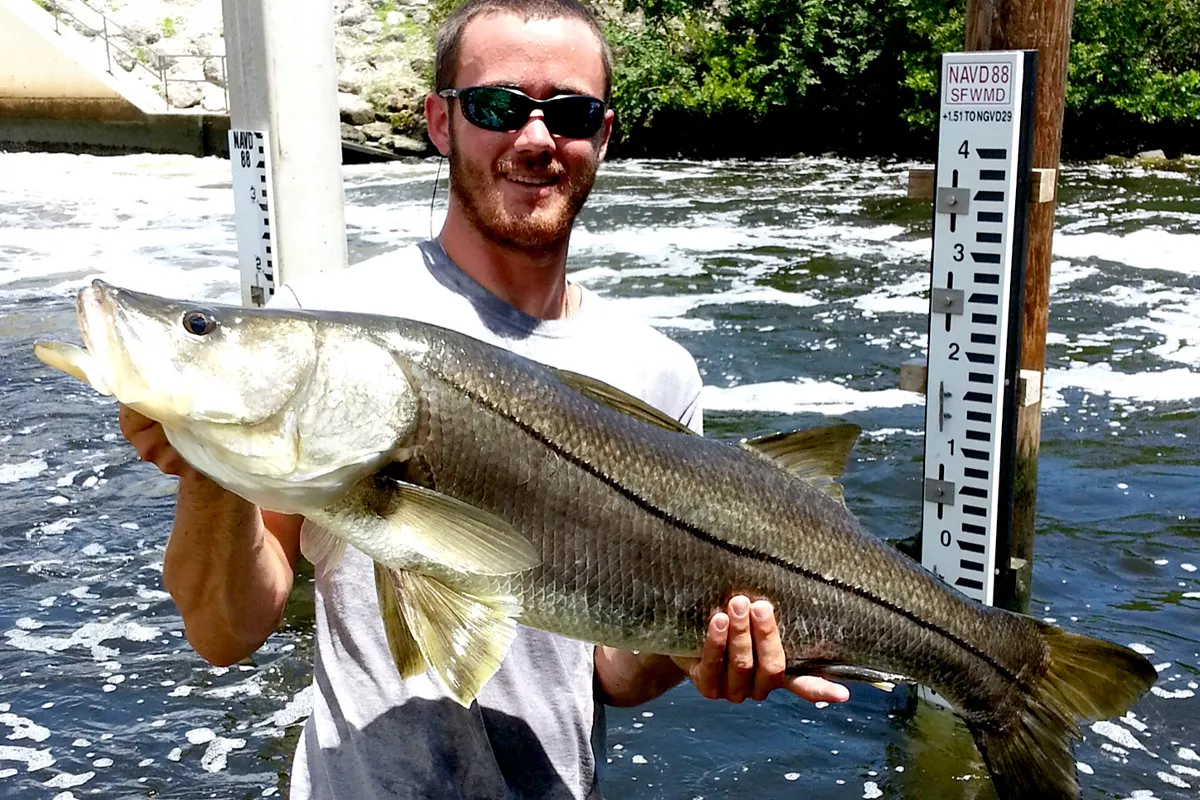
Proven Professional Techniques for Landing More (and Bigger) Snook
Timing proves absolutely crucial for consistent success beyond the basic understanding of tidal influence. Professionals emphasize micro-timing approaches that maximize opportunity windows:
- Position yourself at prime locations 30 minutes before expected tide changes
- Focus intensely during the first hour of water movement after slack tide
- During summer, target cooler periods (early morning, evening, night) when fish feed more actively
- In winter, fish during the warmest part of the day when snook metabolism temporarily increases
Common mistakes that frustrate many snook anglers include using tackle too light to control powerful fish around structure, poor casting accuracy (particularly when targeting mangroves or dock pilings), improper hook sets that pull baits away from subtle-striking fish, failure to adjust presentations based on changing water clarity, and moving too quickly through productive areas before thoroughly fishing them.
For pressured fish in heavily fished areas, guides recommend several effective countermeasures. Fishing during off-hours when most anglers aren't present often produces better results. Using lighter leaders and more natural presentations helps fool educated fish that have seen multiple offerings. Trying unconventional baits or lures that fish haven't encountered repeatedly can trigger strikes when standard offerings get ignored. Finally, focusing on overlooked structure away from obvious fishing spots frequently reveals unpressured fish more willing to feed.
Why Florida Snook Fishing Offers the Ultimate Angling Experience
Florida's snook fishery represents one of the most diverse and rewarding angling opportunities in North America. From the powerful currents of Sebastian Inlet to the labyrinthine mangrove systems of the Everglades, the Sunshine State offers unparalleled variety for snook enthusiasts. The distinctive characteristics of snook—their fighting ability, habitat adaptability, and challenging nature—continue to captivate anglers and cement their status as Florida's premier inshore gamefish.
The resilience of Florida's snook populations reflects decades of effective conservation and management efforts. Through science-based regulations, habitat protection initiatives, and growing catch-and-release ethics among the angling community, snook have maintained healthy populations despite increasing fishing pressure and environmental challenges. However, this success remains tenuous, with threats from habitat degradation, water quality issues, and extreme weather events requiring ongoing vigilance and conservation commitment from all stakeholders.
For anglers planning their own snook fishing adventures, several key considerations will maximize chances for success:
- Time trips to coincide with optimal seasonal patterns and moon phases
- Research regional differences and tailor tackle and techniques accordingly
- Develop versatility with multiple presentation methods to adapt to changing conditions
- Practice responsible stewardship through proper fish handling and selective harvest
- Invest time in understanding the complex relationship between tides, temperature, and snook behavior
Beyond the technical aspects of snook fishing lies the deeper appeal of pursuing these magnificent gamefish. Each snook encounter offers a connection to Florida's unique coastal ecosystems and a test of an angler's skill, patience, and adaptability. Whether you're a seasoned veteran or a novice experiencing your first explosive strike, the pursuit of these silver-sided predators creates fishing memories that last a lifetime.
Seth Horne In The Spread, Chief Creator
Login
to leave a review.
User Reviews
There are no reviews yet.Complete Dredge Pulley Setup Guide
Saltwater
12.28.2020
High Speed Wahoo Trolling Rig
Saltwater
09.07.2018
Best Bait for Wahoo
Saltwater
12.30.2023
Pinfish - A Comprehensive Guide
Saltwater
11.10.2023
0


